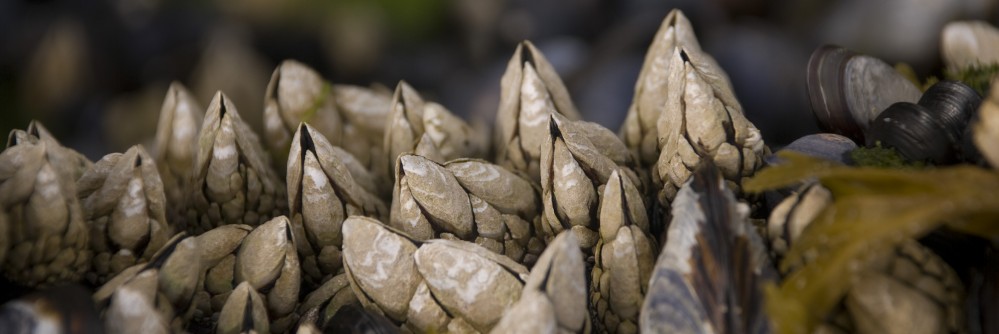I began a research project at Bamfield Marine Sciences Center a couple months ago, and I’ve finally finished collecting and analyzing my data!

A view of the ocean near BMSC
Just a quick recap of what I was looking at: There is quite a bit of information available about tide pool chemistry and how it fluctuates. For example: pH tends to be higher during the summer months and oxygen content increases during the day and decreases at night. I wanted to look at how biotic factors, such as animals and algae, affect their environment chemically. By affecting their environment, organisms affect other organisms within that environment. Some organisms co-exist quite nicely, while others can indirectly compete. An example of a nice co-existence is a seaweed called Cladophora columbiana which lives quite happily in specific areas just because of the chemical secretions of invertebratesinto the water.

Every organism in this tide pool is affecting the chemistry in the water and therefore the other organisms
I described my experimental design for my light and dark experiment in my last post: https://thetransientbiologist.wordpress.com/2012/08/11/bamfield/ basically I tested an algae, sea star and sea snail in light and dark conditions to see how they were affecting pH and oxygen levels.
I also did an outdoor predator prey interaction experiment where I looked at the effects of mussels and sea stars interacting on pH and oxygen content. I wanted to see how each individually affected the tide pool chemistry as well as how they affected it together. There have been studies that have shown that just the presence of a predator, it’s chemical cues and the sight of it, affect the behaviour of prey just as much as a physical interaction between the two. I wanted to test this, so I looked at the sea stars and mussels with a mesh barrier and without a mesh barrier between them.

My predator prey experiment

The beautiful view from my “office”
Four days of data analysis later, I actually got some interesting results! I found that algae act differently in light and dark. Algae photosynthesizes in the light, so it is increasing oxygen and pH, but at night pH and oxygen actually decrease. In sea stars and sea snails the pH and oxygen content decreased during the dark and the light. In my control treatment, which contained only sea water, oxygen and pH stayed the same during the day, but actually decreased at night. This could be due to microorganisms which are opposing each other chemically during the day, but at night the ones which were photosynthesizing and creating oxygen stop counteracting the ones using the oxygen and creating carbon dioxide. To summarize light and dark have significant effects on tide pool chemistry. This could contribute to very different environmental conditions and tide pool communities during the night and day, or summer and winter when daylight hours decrease.

Data management and analysis, aka the things my nightmares are made of
In my predator prey interaction treatment there was no difference between the tide pools containing both mussels and sea stars with a barrier or without a barrier, both decreased oxygen and pH by the same amount. This implies that the mussels are responding the same way to the physical and chemical presence of a predator. Fish and other animals have been shown to change their behaviour when they can sense a predator, so these results are not that surprising but are still pretty interesting to see!

A rainy day of predator prey tide pool sampling
I still have a lot of data and I’d like to play around with it a little more, and I’d like to clean up my paper a little, but over the last couple months I really improved my skills in the whole scientific process. I learned so much about experimental design, reading scientific papers, applying for permits, using various equipment and data management and analysis. Nothing in school can ever prepare you for working with thousands of data points, my organizational excel and R skills have improved so drastically over the last few weeks that I am finally understanding statistical analysis used in papers I am reading.
I learned so much this summer, and I’m excited to apply my new research knowledge to another project this fall!









